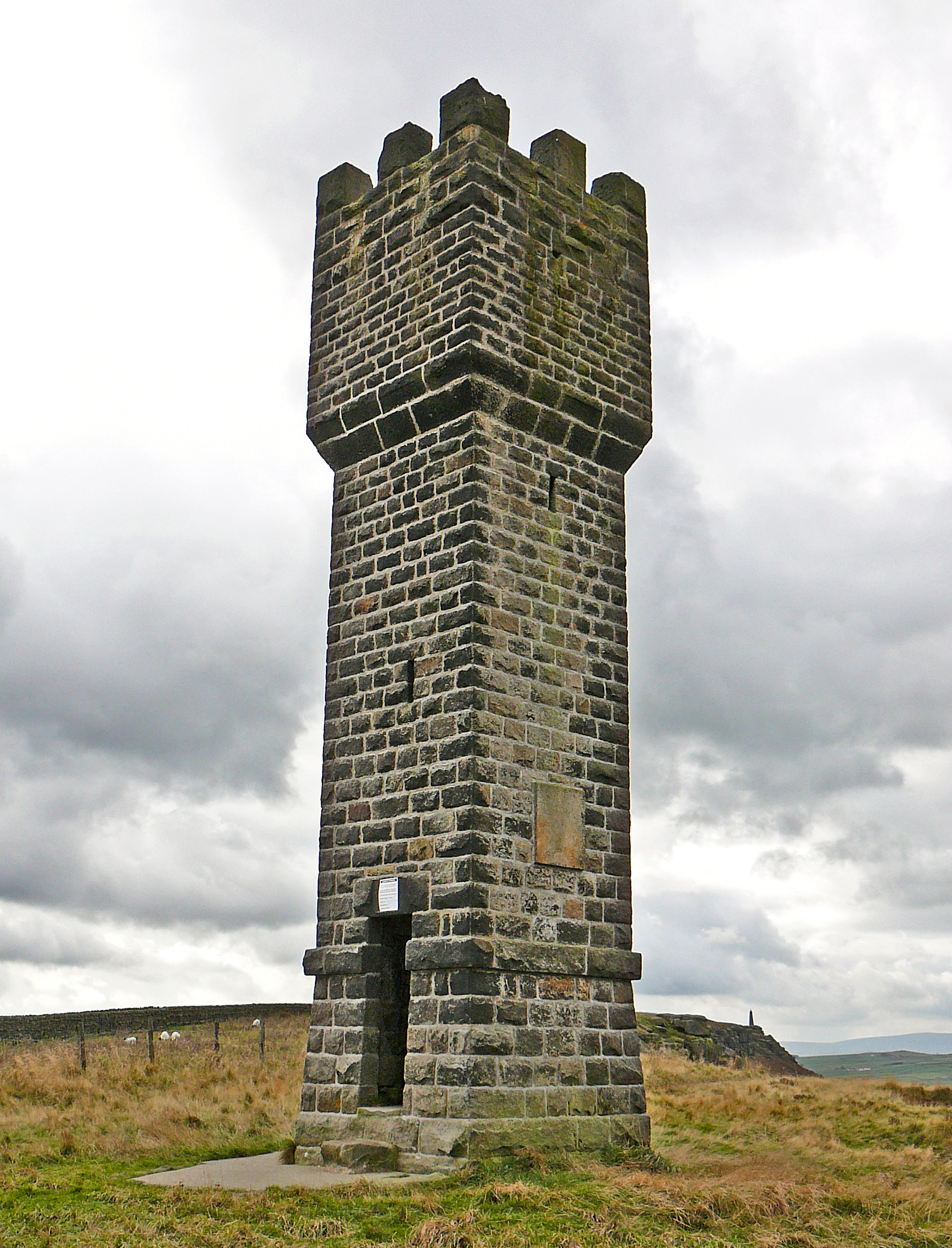Lund's Tower on:
[Wikipedia]
[Google]
[Amazon]
 Lund's Tower is a stone-built
Lund's Tower is a stone-built
File:Lund's Tower on Earl Crag - geograph.org.uk - 1091689.jpg
File:Footpath to Lund's Tower, Sutton - geograph.org.uk - 1281367.jpg
File:Gateway to Lund's Tower, Sutton - geograph.org.uk - 1281440.jpg
File:Earl Crag - geograph.org.uk - 314741.jpg
 Lund's Tower is a stone-built
Lund's Tower is a stone-built folly
In architecture, a folly is a building constructed primarily for decoration, but suggesting through its appearance some other purpose, or of such extravagant appearance that it transcends the range of usual garden buildings.
Eighteenth-cent ...
situated to the south-west of the North Yorkshire
North Yorkshire is the largest ceremonial counties of England, ceremonial county (lieutenancy area) in England, covering an area of . Around 40% of the county is covered by National parks of the United Kingdom, national parks, including most of ...
village of Sutton-in-Craven. It is also known as Cowling Pinnacle, Sutton Pinnacle, the Ethel Tower, the Jubilee Tower or, in conjunction with the nearby Wainman's Pinnacle
Wainman's Pinnacle, originally built as a folly (and still used as a folly), is a stone obelisk in Sutton-in-Craven, North Yorkshire. It tends to be referred to as ‘Cowling Pinnacle’ or 'The Salt Pot' and could also be seen as being a part o ...
, the pair are referred to as the Salt and Pepper Pots.
It is listed in the National Heritage List for England
The National Heritage List for England (NHLE) is England's official database of protected heritage assets. It includes details of all English listed buildings, scheduled monuments, register of historic parks and gardens, protected shipwrecks, an ...
at Grade II.
History
James Lund (1829–1903) commissioned theKeighley
Keighley ( ) is a market town and a civil parish
in the City of Bradford Borough of West Yorkshire, England. It is the second largest settlement in the borough, after Bradford.
Keighley is north-west of Bradford city centre, north-west of Bi ...
architectural firm of R. B. Broster & Sons to design the tower, which was built in 1887. Different reasons have been given for why Lund wanted the folly built: local residents refer to it as the Ethel Tower, believing it was constructed either to celebrate the birth of Lund's daughter Ethel – or her 21st birthday; others refer to it as the Jubilee Tower, believing it commemorated the 1887 jubilee of Queen Victoria
Victoria (Alexandrina Victoria; 24 May 1819 – 22 January 1901) was Queen of the United Kingdom of Great Britain and Ireland from 20 June 1837 until Death and state funeral of Queen Victoria, her death in 1901. Her reign of 63 years and 21 ...
. It is also known as Sutton Pinnacle.
Lund was the son of William Lund, the owner of William Lund & Son, a large textile manufacturing business. In 1852, James Lund married Mary Sarah Spencer, the daughter of William Spencer, a wealthy landowner. The construction of Lund Mausoleum in Utley Cemetery, Keighley was also commissioned by Lund in 1895. Malsis Hall at Cross Hills
Cross Hills is a village in the Craven district of North Yorkshire, England that is situated halfway between Skipton and Keighley. The village is at the centre of a built-up area that includes the adjoining settlements of Glusburn, Kildwick, ...
and Ellerton Hall beside York
York is a cathedral city with Roman origins, sited at the confluence of the rivers Ouse and Foss in North Yorkshire, England. It is the historic county town of Yorkshire. The city has many historic buildings and other structures, such as a ...
were also owned by Lund. A new Malsis Hall was built by him in 1862 and became Malsis School
Malsis School located at a mansion known as Malsis Hall in the village of Crosshills, in North Yorkshire, England, was a co-educational independent
Independent or Independents may refer to:
Arts, entertainment, and media Artist groups
* Inde ...
in 1920. When Lund died in January 1903, his estate totalled £606,679, equivalent to about £62,468,366 as of 2012.
Set on the top of Earl Crag, Lund's Tower is in the same vicinity as Wainman's Pinnacle
Wainman's Pinnacle, originally built as a folly (and still used as a folly), is a stone obelisk in Sutton-in-Craven, North Yorkshire. It tends to be referred to as ‘Cowling Pinnacle’ or 'The Salt Pot' and could also be seen as being a part o ...
, which is also Grade II listed but constructed in 1898 to commemorate the Napoleonic Wars
The Napoleonic Wars (1803–1815) were a series of major global conflicts pitting the French Empire and its allies, led by Napoleon I, against a fluctuating array of European states formed into various coalitions. It produced a period of Fren ...
. The pair of monuments are known locally as the Salt and Pepper Pots.
The tower received Grade II listing in the National Heritage List for England
The National Heritage List for England (NHLE) is England's official database of protected heritage assets. It includes details of all English listed buildings, scheduled monuments, register of historic parks and gardens, protected shipwrecks, an ...
in October 1984 under the designation number 1131781.
Architecture
Crenellated
A battlement in defensive architecture, such as that of city walls or castles, comprises a parapet (i.e., a defensive low wall between chest-height and head-height), in which gaps or indentations, which are often rectangular, occur at interva ...
battlements adorn the eleven-metre tall tower, which is constructed from squared-dressed stone. It has a plinth and an unreadable plaque. The interior has a stone built spiral staircase of thirty-nine steps. There is also a viewing platform.
Gallery
References
Notes Citations Bibliography * {{coord, 53.88378, -2.01333, format=dms, type:landmark_region:GB, display=title Folly towers in England Grade II listed buildings in North Yorkshire Towers completed in 1887 Craven District